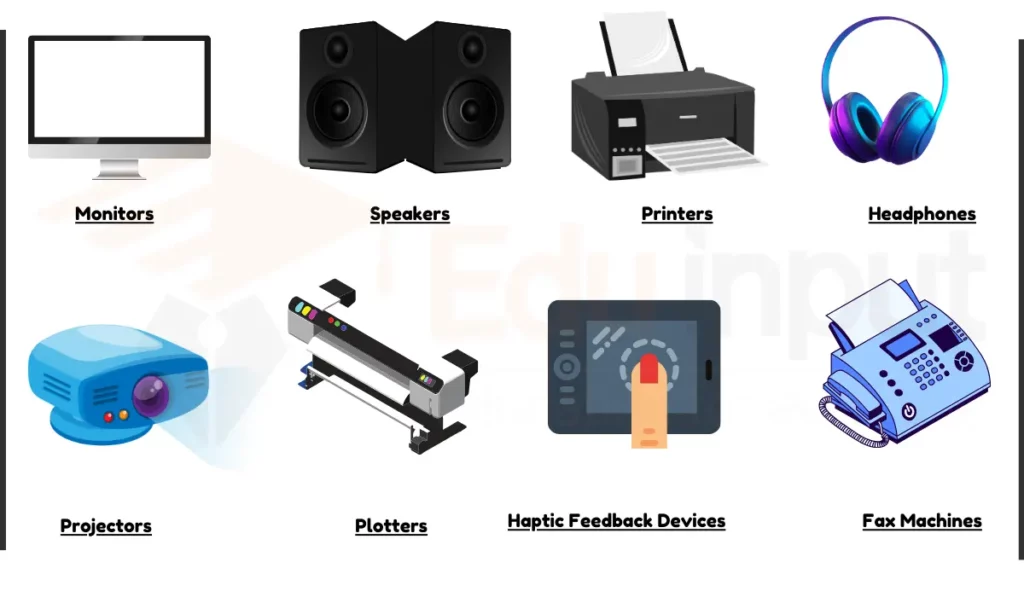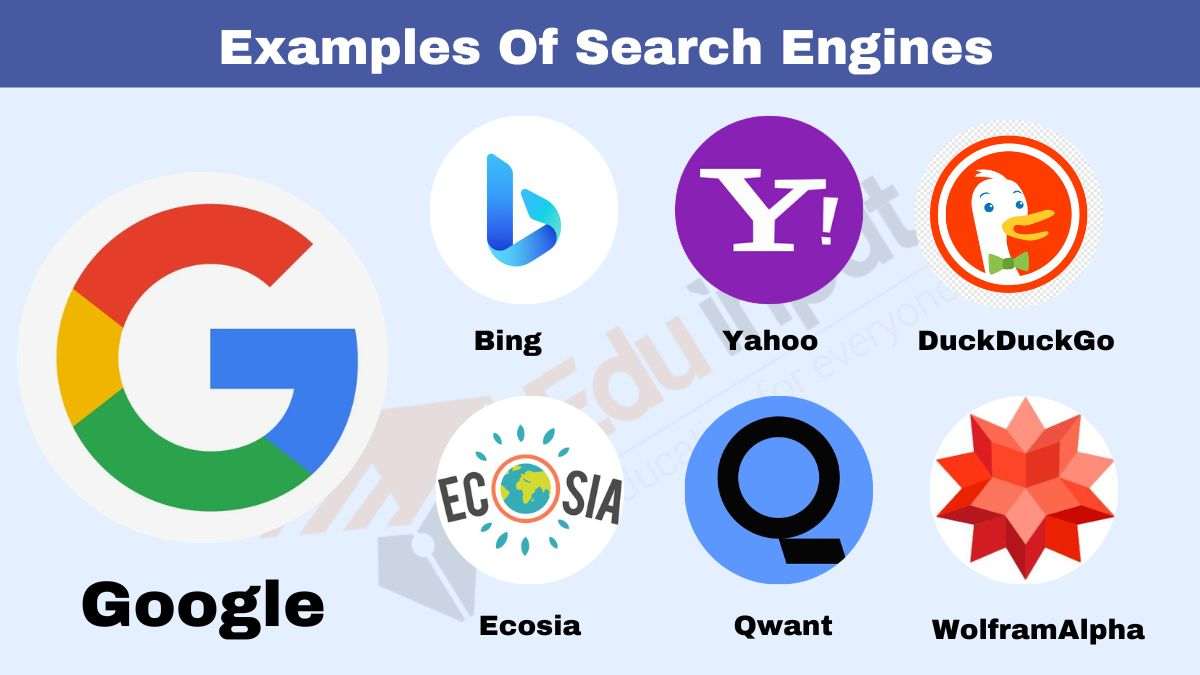22 Examples of Output Devices of Computer
Learn to code with Codecademy
Examples of output devices of computers include monitors, printers, and speakers. Monitors, such as LCD or LED screens, visually display digital information, while printers produce hard copies of documents using technologies like inkjet or laser. Speakers convert digital audio signals into sound and provide users with an auditory output experience.

Examples of Output Devices of Computer
1. Monitors
Monitors are one of the most common Examples of Output Devices of Computers. Monitors serve as visual output devices, displaying digital content from computers. Common types include LCD, LED, and OLED monitors, each with varying resolutions (e.g., Full HD, 4K) for high-quality visuals.
They connect via HDMI, DisplayPort, or VGA for data transmission. Resolution influences image clarity, while connectivity options ensure compatibility with diverse devices.
2. Printers
Printers are another example of Output Devices of Computers. It produces hard copies of digital content. Inkjet printers are versatile, providing high-quality color prints, while laser printers offer fast monochrome printing.
Resolution is measured in DPI (dots per inch), affecting print quality. Connectivity options include USB and wireless, facilitating convenient data transfer.
3. Speakers
Audio output devices like speakers convert digital signals into audible sound. Different types include stereo, 2.1, and surround sound speakers, each providing varying levels of audio immersion.
Connectivity options include USB, 3.5mm audio jack, or wireless connections. Audio quality is influenced by speaker type and technology.
4. Headphones
Similar to speakers, headphones provide personalized audio output. They come in various types, including over-ear, on-ear, and in-ear, offering different levels of comfort and sound isolation.
It can be connected through a 3.5mm audio jack or wireless technologies like Bluetooth. High-quality headphones enhance the audio experience.
5. Projectors
Projectors display digital content on a larger surface. Common types include DLP, LCD, and LCoS projectors, with varying resolutions.
They can be connected via HDMI, VGA, or wireless technologies, and their speed is measured in lumens for brightness. Resolution impacts image clarity, while brightness ensures visibility in different environments.
6. Plotters
Plotters are output devices that create precise physical reproductions. It is often used for technical drawings. Pen plotters use pens of different colors, and they connect to computers typically via USB or parallel ports. Precision and color variation are crucial aspects of plotter functionality.
7. 3D Printers
3D printers build physical objects layer by layer from digital designs. Common technologies include Fused Deposition Modeling (FDM) and Stereolithography (SLA). Connectivity is often through USB or SD card, and printing speed varies based on complexity. Layer resolution influences print detail.
8. Braille Embossers
Braille embossers convert digital text into Braille, enabling tactile reading. They connect to computers via USB or serial ports and produce embossed Braille on specialized paper. Connectivity and embossing precision are critical for accessibility.
9. Haptic Feedback Devices
Haptic feedback devices simulate touch sensations. Examples include vibrating game controllers or force feedback in steering wheels. Connectivity is usually through USB or wireless interfaces like Bluetooth. Feedback precision enhances user immersion.
10. LED Displays
LED displays use light-emitting diodes for visual output. Common in digital signage, they offer high brightness and energy efficiency. Connectivity includes HDMI, DisplayPort, or other proprietary interfaces. Brightness and color accuracy contribute to display quality.
11. Epson Smart Glasses
Smart glasses like those from Epson can act as output devices by overlaying digital information onto the user’s field of view. They often connect to computers via Bluetooth or Wi-Fi. Connectivity and display quality are crucial for augmented reality experiences.
12. Virtual Reality Headsets
VR headsets immerse users in virtual environments. They connect to computers via USB or HDMI, and their speed is crucial for preventing motion sickness. High-resolution displays contribute to a more immersive experience. Refresh rate and field of view impact VR realism.
13. Fax Machines
Fax machines transmit digital documents over phone lines, producing physical copies. They connect to landline telephones and often feature built-in modems for communication. Modem speed and document feed capabilities influence faxing efficiency.
14. LED/LCD Billboards
Large-scale displays in billboards use LED or LCD technology. Connectivity options include Ethernet, HDMI, or wireless connections for remote content updates. Brightness, contrast ratio, and durability are key considerations for outdoor displays.
15. Digital Photo Frames
Digital photo frames display a slideshow of digital images. They often include SD card slots or USB ports for easy content transfer. Display size, resolution, and aspect ratio impact the quality of photo presentations.
16. Barcode Printers
Barcode printers generate labels with barcodes for tracking. They connect to computers via USB or Ethernet and vary in speed and resolution based on application requirements. Print speed and barcode precision are critical for efficient inventory management.
17. Digital Signage Displays
Digital signage displays showcase dynamic content in public spaces. They connect via HDMI, DisplayPort, or wireless technologies and often support remote content management. Connectivity, display size, and durability are crucial for effective digital signage.
18. Interactive Whiteboards
Interactive whiteboards combine display capabilities with touch or pen input. They connect to computers through USB or wireless interfaces and facilitate collaborative presentations. Touch sensitivity, response time, and compatibility with input devices influence interactive functionality.
19. LED Status Indicators
LED indicators convey system status. They connect internally to the computer’s motherboard or externally through USB or other interfaces. Color variation and flashing patterns communicate different system states.
20. CNC Machines
CNC machines use digital instructions for precision manufacturing. Connectivity involves computer-controlled interfaces like USB or Ethernet. Precision, speed, and tool versatility are crucial for CNC machining.
21. Thermal Printers
Thermal printers use heat for image transfer. Common in receipt printers, they connect via USB or serial ports, and printing speed is critical for point-of-sale applications. Print speed, resolution, and paper handling influence efficiency.
22. Air Traffic Control Displays
Specialized displays in air traffic control systems provide real-time information. They connect through dedicated networks and feature high-resolution screens for accurate data visualization. Refresh rate and color accuracy are vital for effective air traffic management.







Leave a Reply